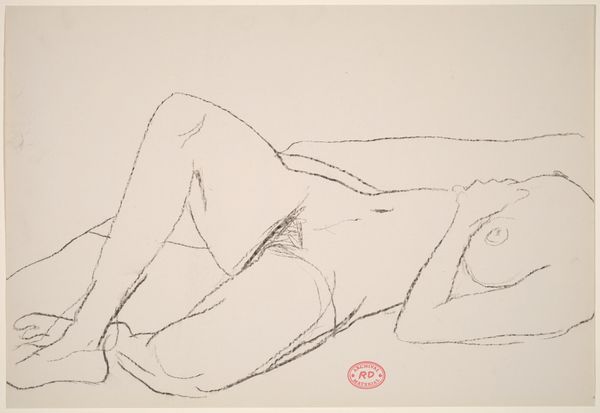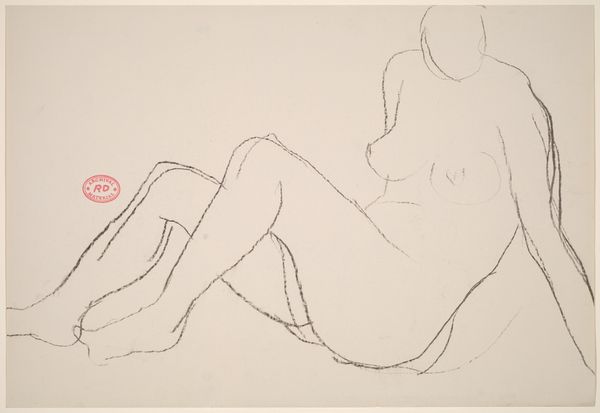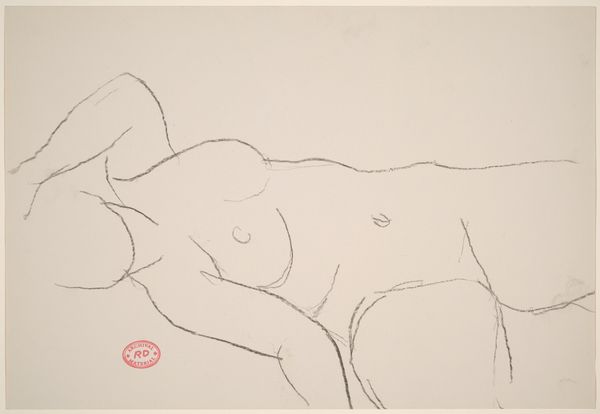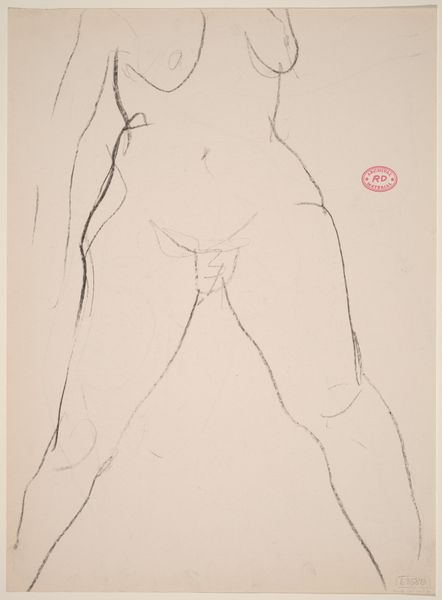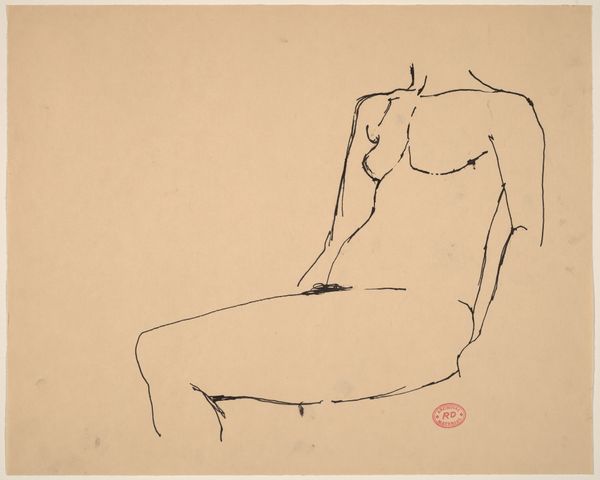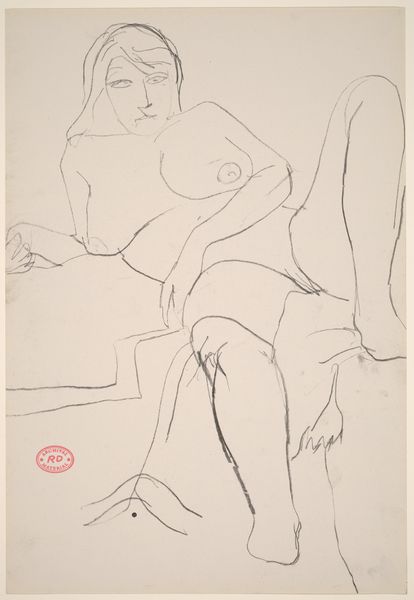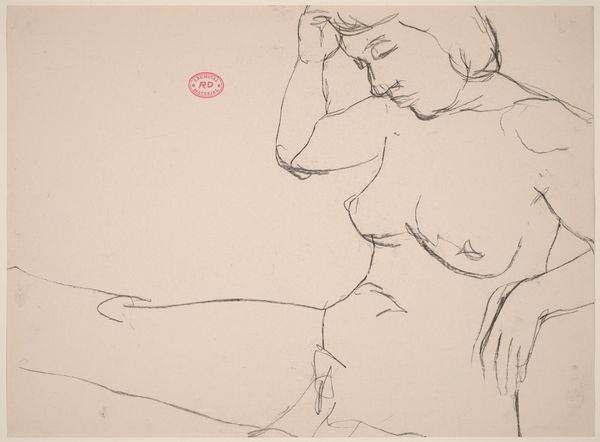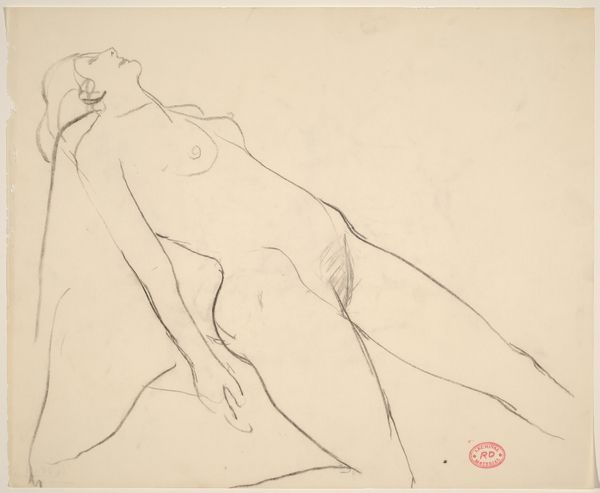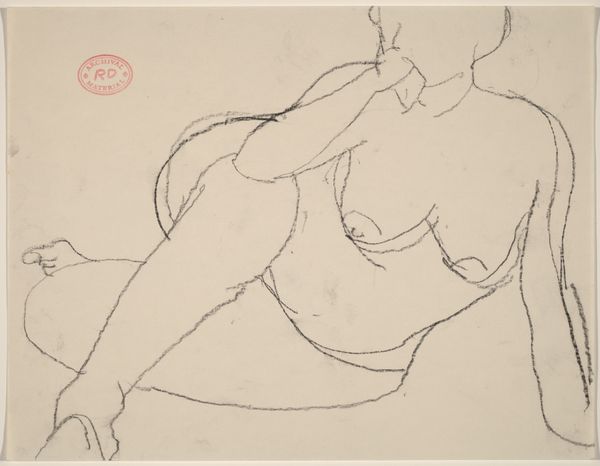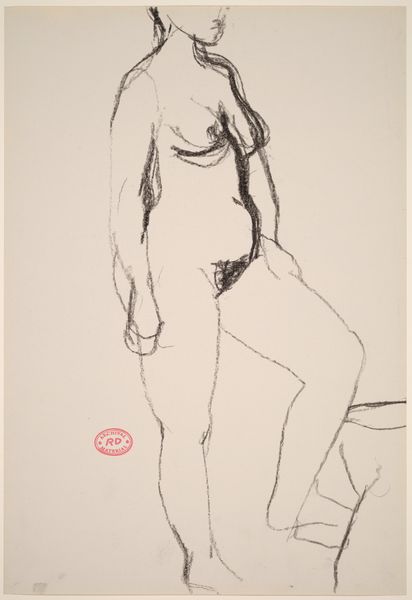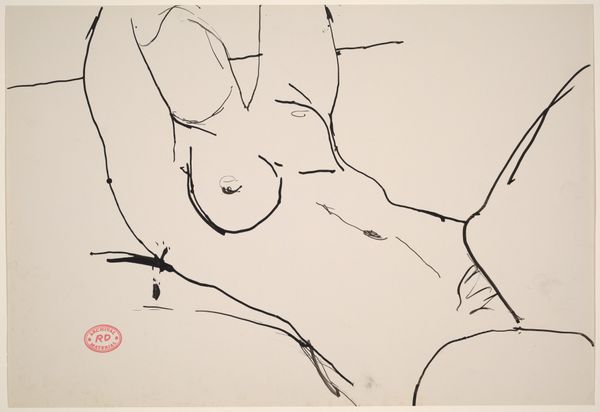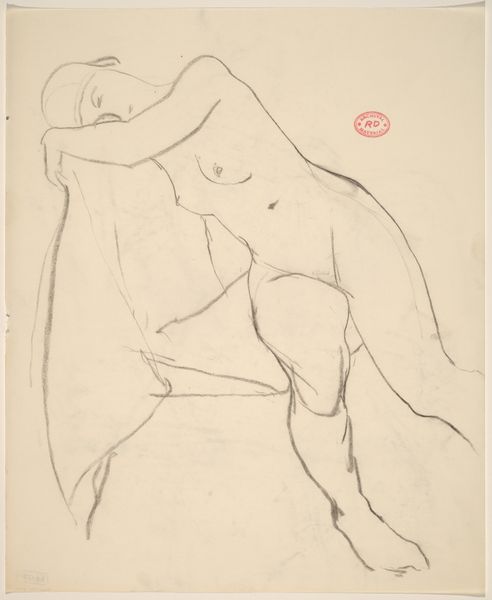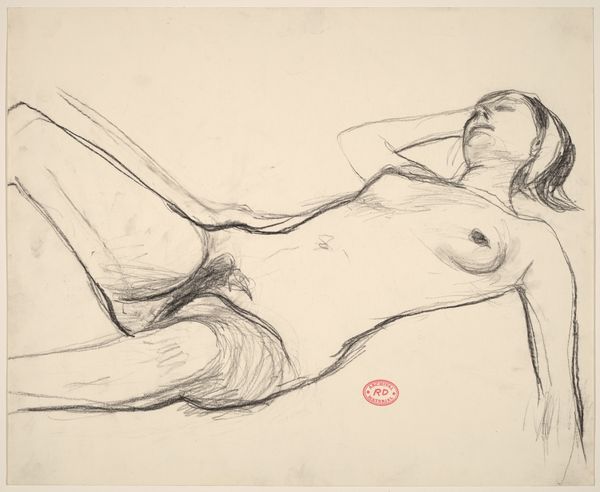![Untitled [seated nude leaning on arm] by Richard Diebenkorn](/_next/image?url=https%3A%2F%2Fd2w8kbdekdi1gv.cloudfront.net%2FeyJidWNrZXQiOiAiYXJ0ZXJhLWltYWdlcy1idWNrZXQiLCAia2V5IjogImFydHdvcmtzL2U1ZGRhMjliLTBhZDUtNGVjMC05MDk3LTA1OTdhODdmMGNiMi9lNWRkYTI5Yi0wYWQ1LTRlYzAtOTA5Ny0wNTk3YTg3ZjBjYjJfZnVsbC5qcGciLCAiZWRpdHMiOiB7InJlc2l6ZSI6IHsid2lkdGgiOiAxOTIwLCAiaGVpZ2h0IjogMTkyMCwgImZpdCI6ICJpbnNpZGUifX19&w=3840&q=75)
drawing, pencil
#
pencil drawn
#
drawing
#
figuration
#
bay-area-figurative-movement
#
pencil drawing
#
pencil
#
academic-art
#
nude
Dimensions: overall: 27.9 x 40.6 cm (11 x 16 in.)
Copyright: National Gallery of Art: CC0 1.0
Editor: We’re looking at Richard Diebenkorn’s "Untitled [seated nude leaning on arm]", a pencil drawing created sometime between 1955 and 1967. It’s incredibly simple, just a few lines really, but it perfectly captures the pose. What draws your eye when you look at this? Curator: The rawness of the material, primarily. Diebenkorn chose humble pencil and paper to depict the human form. What does this conscious decision say about the accessibility of artmaking and the representation of the body? Was he interested in stripping away pretension and challenging notions around traditional media and the commodification of the figure? Editor: I hadn't thought of it that way, about accessibility. It definitely feels less idealized than some academic nudes. Curator: Exactly. And the "Untitled" aspect also adds to this materialist understanding. How does that absence of a formal title direct our attention toward the actual labor and physical creation of the artwork itself, the process of mark-making? Is he challenging the prevailing capitalist market by making this work accessible, using modest materials and process-based work? Editor: That’s interesting. So you're saying that by choosing these materials, Diebenkorn is maybe commenting on art’s role in society? Curator: Precisely. Consider the context. Post-war America, mass production... Is he responding to that with this direct, unadorned approach, bringing art back to its basic elements: the body, the artist’s hand, the paper, and the pencil? What societal forces may be reflected in his selection and emphasis? Editor: It's definitely made me reconsider the power of "simple" materials. Thanks! Curator: Likewise, thinking about art in terms of its material reality can change our entire understanding.
Comments
No comments
Be the first to comment and join the conversation on the ultimate creative platform.
